| Manufacturer | H.K. Precision Technology (HKPT) |
| Caliber Number | PT5000 |
| Movement: |
Automatic |
| Lignes |
11.5”’ |
| Diameter |
25.60mm |
| Height |
4.60mm thick |
| Jewels | 25 |
| Power Reserve | 38 hours |
| Lift Angle |
50 degrees |
| Vibrations Per Hour | 28,800 bph, 4Hz |
| Hacking? | Yes |
| Hand-Windable? |
Yes |
| Quickset Date? | Yes |
| Rotor Type |
Ball bearing |
| Anti-Shock | Novodiac style (see below) |
| Functions | Hours, minutes, central seconds, date at 3:00 |
| Country of Manufacture | China |
| Known Models |
Shancheng Exceptional Life (山城表 卓越糸列非凡人生), Chronos Turtle Bronze Diver (Add your watch to the comments below…) |
| Note to Other Creators |
We work hard on this site. If you use this information in your blog or video review, please properly credit the source: @calibercorner / calibercorner.com. If you see someone using our stuff without giving credit, call them out on it and let us know. Thanks. |
The H.K. Precision Technology caliber PT5000 is an ETA 2824-2 clone made in China. The debut of this movement was mentioned in Chinese news articles as far back as September 2015.
Aside from 2 mechanical movements (PT5000 and a manual wind caliber PT5100), HK Precision Technology specializes mostly in multi-function quartz movements and digital LCD screen smart watch movements.
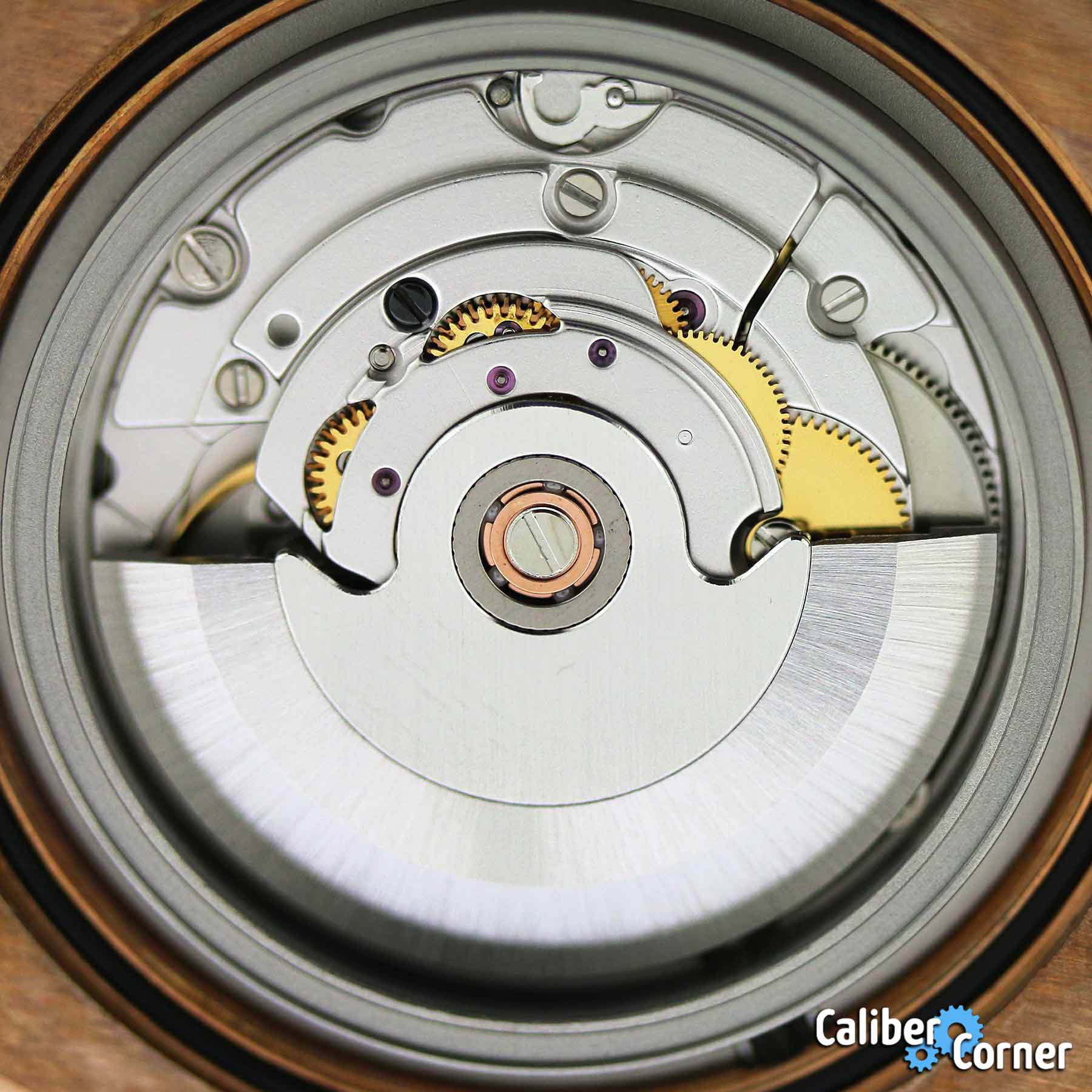
Some of the topics covered in this caliber listing:
Is caliber PT5000 a certified chronometer?
The ETA caliber 2824-2, as well as clones like the Sellita SW200-1, are available in a chronometer grade. Theoretically, this implies that any movement following the design of the 2824-2, made from similar quality materials and precisely regulated, should be able to pass the criteria used to determine chronometer certification.
On January 24, 2018, a Shancheng brand watch powered by the the caliber PT5000 received attention for receiving chronometer status after passing tests at the Glashütte Observatory in Germany. Although it’s possible that other brands using this caliber will market this achievement, it does not mean that all watches with this movement will be within chronometer spec. In other words, the capability for the caliber PT5000 to be adjusted for timekeeping within chronometer spec does not necessarily mean that a watch with this movement is a certified chronometer.
Chronometer Observatory in Glashutte:
Sometimes when folks hear the word “Glashütte” they immediately associate it with Glashütte Original. To clarify: The Glashütte Chronometer Observatory is located in the town of Glashütte, and is not affiliated with the Swatch Group owned watch brand Glashütte Original, other than the fact that they are in the same city. The observatory is actually owned and operated by German watch and jewelry retailer Wempe, where they certify their own brand of chronometer watches, as well as watches from other brands such as the aforementioned Shancheng.
The Glashütte Observatory tests and certifies watch movements for timekeeping within chronometer spec under DIN 8319. This is similar to how the Contrôle Officiel Suisse des Chronomètres (COSC) tests for ISO 3159 standards, except for the fact that COSC only tests and certifies Swiss made movements, whereas the Chronometer Observatory has no such restriction. Additionally, COSC tests uncased movements, but the Glashütte Observatory will test cased or uncased movements.
PT5000 Accuracy:
For caliber PT5000 movements that are available to purchase wholesale for other brands to put in their timepieces, HK Precision Technology claims an accuracy rating of +/-12 seconds per day. The experience with the movement pictured here has that rating beat…
0 Seconds Loss/Gain Phenomenon:
In the videos section below, there is a clip we posted on Instagram of a PT5000 powered watch on the timing machine. Here is the caption:
Did not want to believe the hype, but holy cow! This PT5000 has been consistently running at 0 seconds gain/loss all day. Straight from the factory, no regulating by us. Tested dial up, dial down, case closed, open… no change. Seriously impressed. Still straight 0’s as I’m typing this. Had to throw a Sellita SW200-1 on the timing machine just to make sure there wasn’t an issue lol.
Similarly, INAMINUTE posted this on WUS:
“STOP PRESS. I have now worn the watch for two days, and it still reads “0” beat error and “0” SPD. What is more, I have I have worn it during the day, laid it dial up at night, and timed it against “the exact time is” app, and it has maintained 100% accuracy. Seriously, if I couldn’t see the movement through the exhibition back, I may have thought it was a quartz. Amazing !!” –source
This is exceptional considering that this movement comes from a factory that specializes in digital LCD watch movements. Don’t get all excited though, the 0 seconds phenomenon does not mean you are going to experience the same results with your caliber PT5000. There are many variables that can affect timekeeping, but it is quite interesting to see similar performance of these movements being shared across the watch community. Have you timed a watch with this movement? Please comment below and let us know.
PT5000/2824-2 Parts Interchangeability
Although some brands using the PT5000 may tout that the ETA 2824-2 is a tried and true movement being used by many watch companies, therefore parts are always readily available if needed, it is not confirmed which (if any) parts from the ETA 2824-2 are directly interchangeable with the PT5000.
For example, although the Sellita SW200-1 is a clone of the ETA 2824-2, it still has parts that only fit Sellita. Clone does not mean exact 1 to 1 copy. It just means it is based on the original technical designs of the 2824-2. Therefore, we do no have enough information to comment on parts availability for the caliber PT5000.
The replacement price of the entire PT5000 movement may be more economical than spare parts for a Swiss made ETA 2824-2, so that alone should make one at ease with the idea of having to source parts. Just buy a spare movement and have it on hand if your is in need of repair.
It would be interesting to try various ETA parts in the PT5000, say for example the ratchet wheel or click spring. We may try this in the future. If so, we will update this post with results.
Editor’s Note: In the specs chart above you can see it says the shock protection is Novodiac by Incabloc (Unconfirmed). The reason this is unconfirmed is because it has not been confirmed whether it is a clone Novodiac (clone meaning knock-off, copy, counterfeit… right?) or if it is genuine Swiss Novodiac parts from Incabloc. With clone movements like this, there is no solid confirmation of stuff like this, and if 99.99% of the other parts are cloned/made in China, then what is to say the anti-shock isn’t as well? Unless the manufacturer of the movement discloses where individual components (such as the anti-shock device) came from, there is sometimes no way of knowing (beyond quality or side-by-side comparisons – which is not always accurate) and it possibly should be assumed that the parts are also cloned. Share your thoughts on this below.
Update: After getting our hands on a PT5000 and capturing macro shots (below), there are visual differences between the anti-shock in the movement when compared to a genuine Novodiac. It’s more of Novodiac “style” as far as we can tell. Interestingly, if you look at the marketing banner below from Shan Cheng, they show a movement with a Novodiac style shock absorber, then they show a magnified image of what looks like a KIF absorber. The same image shows a Seiko Magic Lever below the shock absorber. Remember, this is not a random image, it’s from the same company that produces the movement. Strange, but these inconsistencies are not unfounded with the watch manufacturers in China. Just look at the description for some factory’s watches and you will see the movement listed as quartz when it is an automatic in the picture.
PT5000/ETA 2824-2 Swapability:
Since the PT5000 is a clone of the 2824-2, the sizes are identical, so entire movements should be swapable as long as the dial feet for the PT5000 are in the same location as the 2824-2. (Please confirm in the comments below)
Who Produces the PT5000?
We have previously noted the confusion with identifying Chinese made movements and the inconsistencies around the factory or manufacturer associated with specific caliber numbers. The confusion continues with the PT5000. Trying to find the actual manufacturer (such as ETA, Sellita, Soprod, Miyota, etc) to put in front of the caliber number can lead one down a rabbit hole with no clear answer.
You may see this movement referred to as the HK Precision Technology (HKPT) caliber PT5000 or the Shan Cheng caliber PT5000. The corporate structure might look something like this: Hong Kong Precision Electronics Co., Ltd, > H.K. Precision Watch & Clock MFG. Co. Ltd. > Chong Qing Clock & Watch > Shan Cheng Watch. Based on this, Shan Cheng is the name of a watch brand within the HK Precision Group, that uses the PT5000 in some of their models.
“On September 9, 2015, the first high-end mechanical watch movement PT5000 successfully developed by Chongqing Watch Co., Ltd. and Hong Kong Precision Technology Co., Ltd. was launched.” –source
Based on the excerpt above, it seems that it could be correct to call it the Chongqing caliber PT5000 or HK Precision Technology PT5000. The Shancheng watch with this movement also has Chong Qing on the dial, but that could also be because the company is located in Chong Qing, China.
Researching this further, some PT5000 movements have a logo under the balance wheel which belongs to HK Precision Technology, therefore, we’re officially calling it the HK Precision Technology (or HKPT) caliber PT5000 for now.
Shancheng PT5000:
Below is a image of a gilt (gold tone) PT5000 in a Shan Cheng watch. It’s not easy to see, but notice the rotor is signed Chong Qing on the left side.
Here is an example of Shancheng marketing the use of the PT5000 in some of their watches. (source)
How to know if you have a caliber PT5000 in your watch?
Here’s the thing: although there are a few images floating around showing the PT5000 with a caliber number etched below the balance wheel, we have not seen a real world example like this. As with many clone movements from China, the PT5000 appears to have no identifying markings or engravings. There is no way to tell what it is!
It would really be interesting to know why the company would go through the effort to create such a decent performing 2824-2 clone and not want to mark every movement with their logo and caliber. Because of this, there is no actual way to determine if the PT5000 is indeed a genuine PT5000 or a PT5000… clone. Such is the rabbit hole of the Made in China watch industry.
UPDATE: Fake PT5000 movements in Chronos Watches?
No markings under the balance wheel means fake PT5000?
There are comments popping up online that PT5000 movements without a logo under the balance wheel means it’s fake. There is no substantial photographic proof that every PT5000 is engraved with a HKPT logo or caliber number. At the time of this post, there are literally 2 images on the entire internet that show an example of a signed movement, and they are both from the same source, without any background of the images, when and where they were captured, etc.
Therefore, assumptions of “fake” PT5000 movements are being made based on a single set of images online of markings under the balance wheel. That movement is likely a sample from the factory, with the actual product having a different finish and lack of markings. It’s also possible that any watch brands ordering PT5000 movements in bulk can make a special request to have movements “customized” with the caliber number for an extra charge. Anything is possible when dealing directly with the factory… that’s basically the point of doing business in China. The ultimate test here would be to crack open a watch from the brand that shows the signed PT5000 pics, is there an etching under the balance wheel? Now crack open a watch from another brand using the PT5000, is it engraved? Donate one to this site and we’ll open it, photograph it, and add it to this write up.
This is the double edged sword of buying Chinese watches made in China and being sold by Chinese brands on Chinese websites. There are trust issues for obvious reasons. Not only because it’s the land of fakes, but the lack of consistent information, lack of consistent factory names, lack of decent photographs showing consistent product doesn’t help.
In conclusion, don’t freak out if your movement doesn’t have the logo/caliber number engraved. No engraving doesn’t mean you have a fake PT5000, it just reinforces the inconsistencies that are often seen with the watch manufacturers in China.
The PT5000 is too new of a movement to make such assumptions based on 2 pictures online, and so far there are far more examples of unsigned movements than signed movements. Even the marketing image from the main Chinese watch brand using the PT5000 and an actual division of the factory that produces the movement… shows an unsigned PT5000 (scroll up).
Rant: Oh, the irony of the watch industry… clone of a clone “fake” movements of movements that are almost exact copies of original designs and are found in known fake watches, and were originally developed for fake watches, but because of the lack of an engraving (which is entirely common in Chinese movements) it causes fake rumors to start. How can it be fake if it’s coming directly from the source? So here’s an interesting thought: Most of the watches with the PT5000 are also available with the SW200-1, but do you trust that it’s a genuine SW200-1?
Prediction: After this post, all of the pictures of PT5000 movements are going to have the rotor set in a position to cover up the balance wheel lol.
If you have a watch that was sold as having a PT5000 movement inside, please comment below if it has an HKPT logo or PT5000 marking under the balance wheel.
Replacement Prices:
At the time of this caliber listing, replacement prices for the PT5000 were found online in the range of $68.00 to $72.00 USD.
PT5000 Macro Gallery:
Video:
From the video: This movement was in a brand new watch, filmed immediately after opening the caseback. Unlike many movements we see, it did not have any fingerprints anywhere, but there were some small particles of dust. The reversers have some grease or something else on them, and as you can see at about 4:05 there is some excessive spinning action from the reversing wheels. There is also a smudge around the anti-shock block. Minimal screwdriver markings. Other than that, it is a very clean movement. There is a loud click to the mainspring barrel during winding, which you can heard towards the end of the video when Rodico is being used to rotate the oscillating weight. Did not want to believe the hype, but after casing this back up, the watch is reading 0 seconds per day loss/gain in dial up and dial down position. Seriously, will post videos on Instagram, so follow @calibercorner there.
View this post on Instagram
PT5000 Pros and Cons:
Pros
- Affordable alternative to the ETA 2824-2
- About half the cost of an SW200-1
- Multiple reports of impressive accuracy
Cons
- No markings or identifiers on the movement
- Parts are basically impossible to find
- Warranty/repairs of watches from China could be challenging
Examples of watches with this caliber:
The caliber PT5000 automatic movement featured in this post was found in this bronze diver from a Chinese watch manufacturer:
More timepieces with this caliber can be found in the price range of $230.00 to around $400.00 USD.
Additional Resources:
Did you make it this far? Cheers to you. Leave a comment!


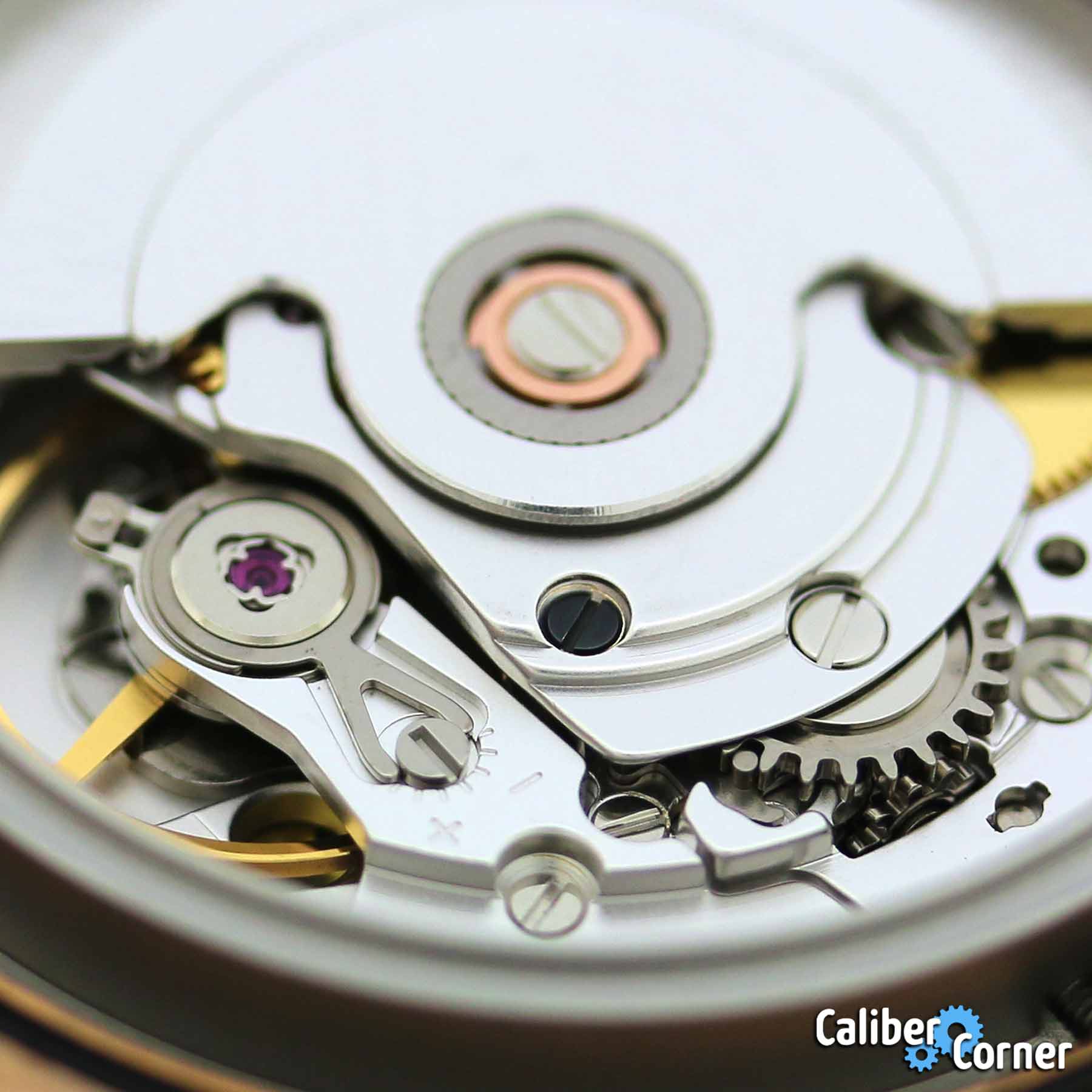



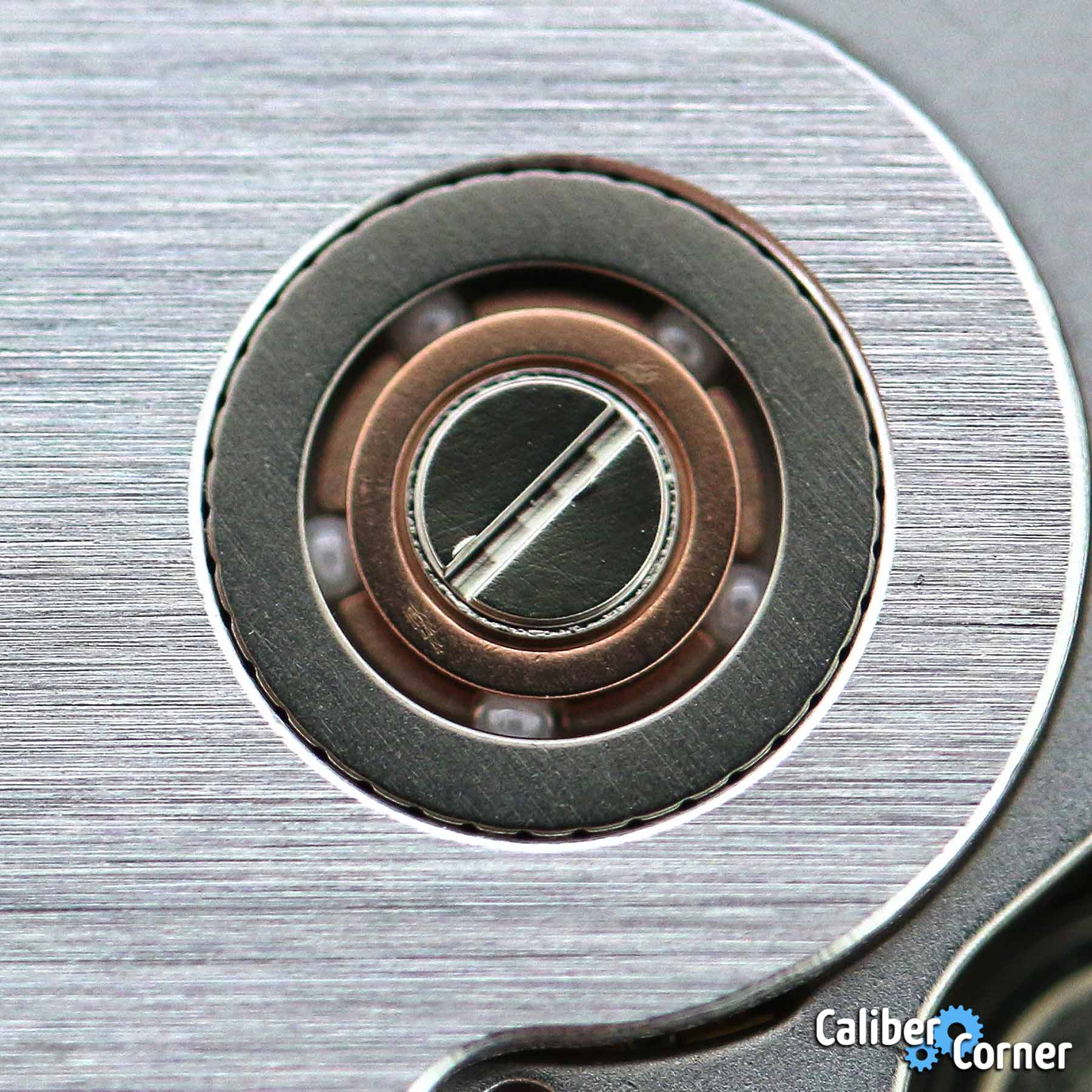
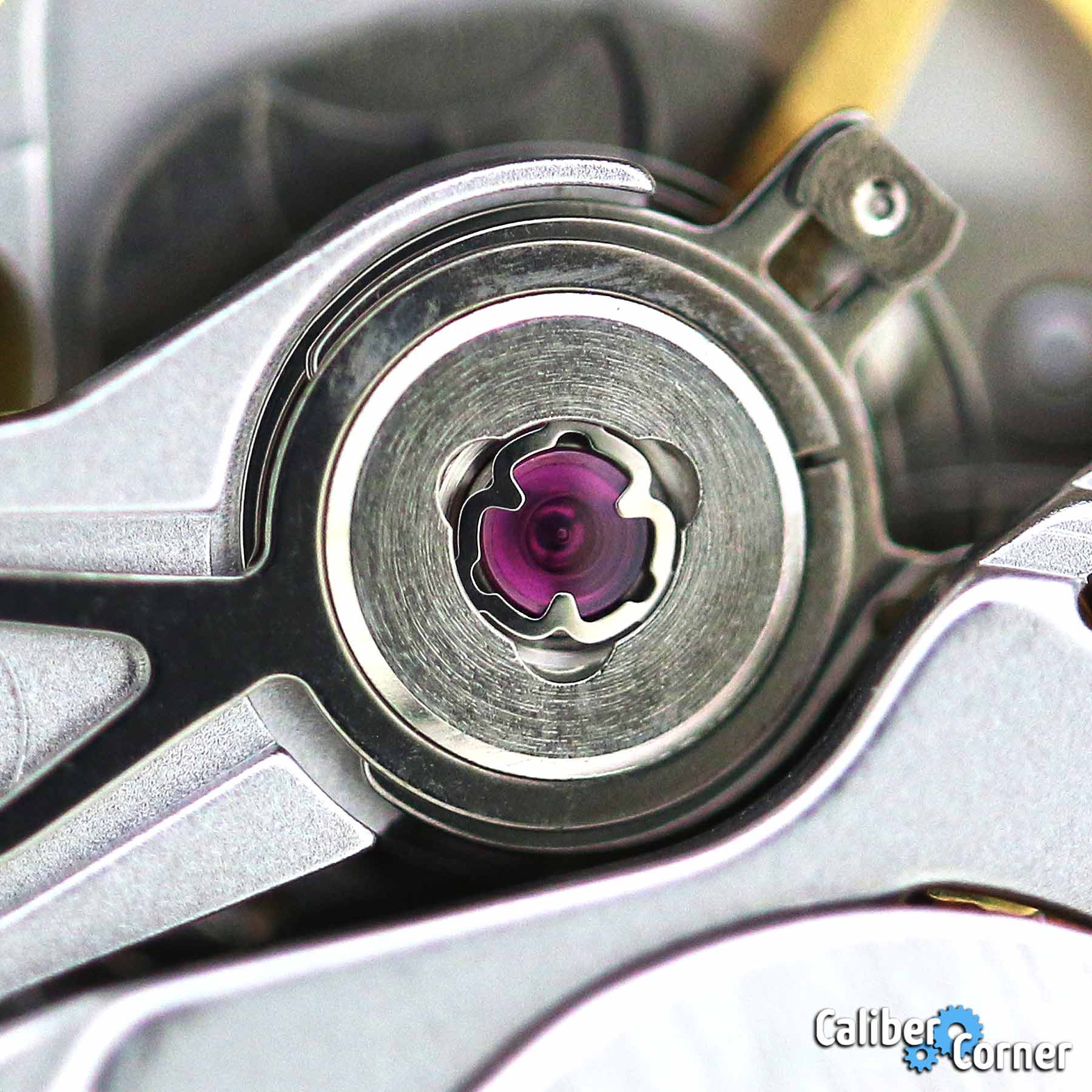

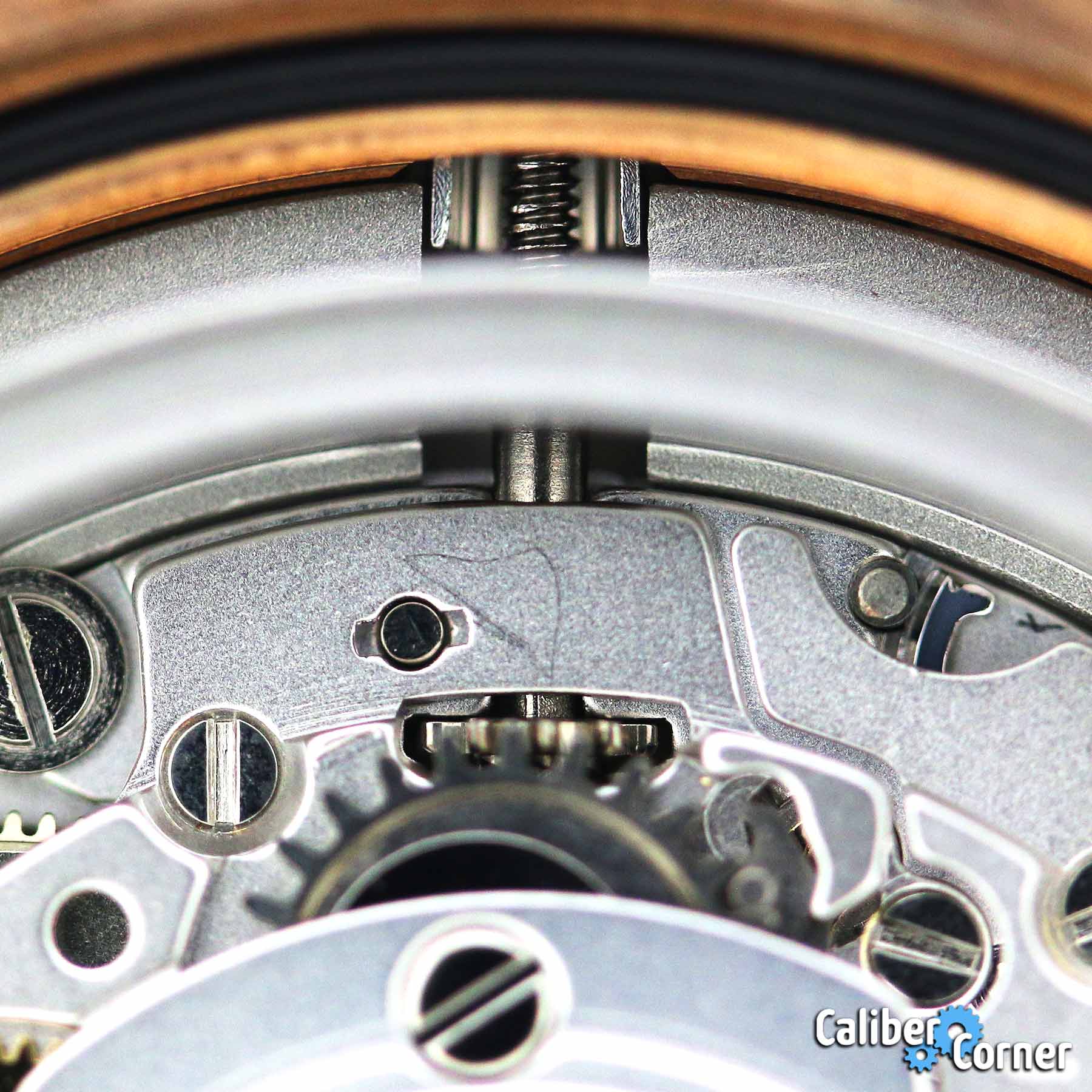
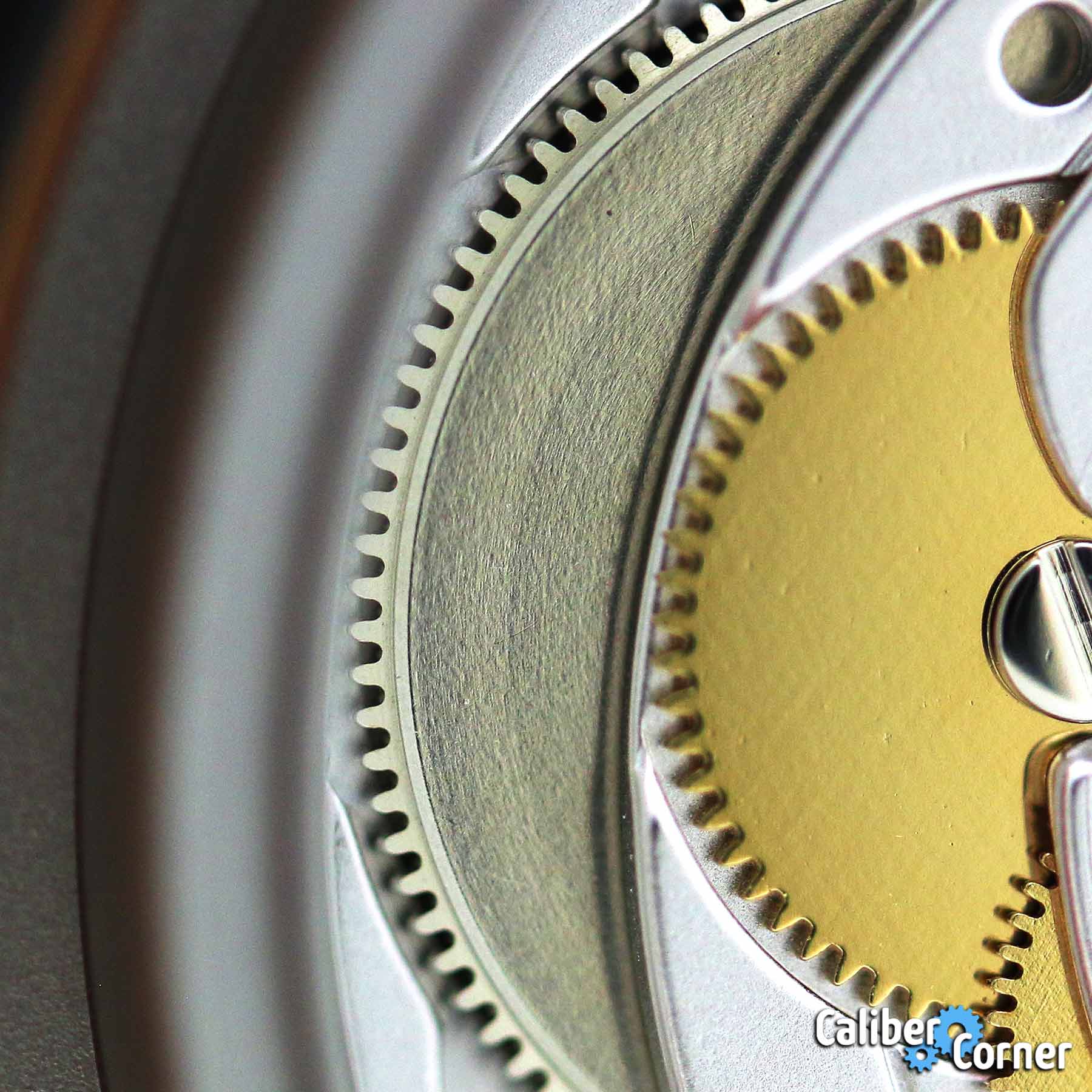
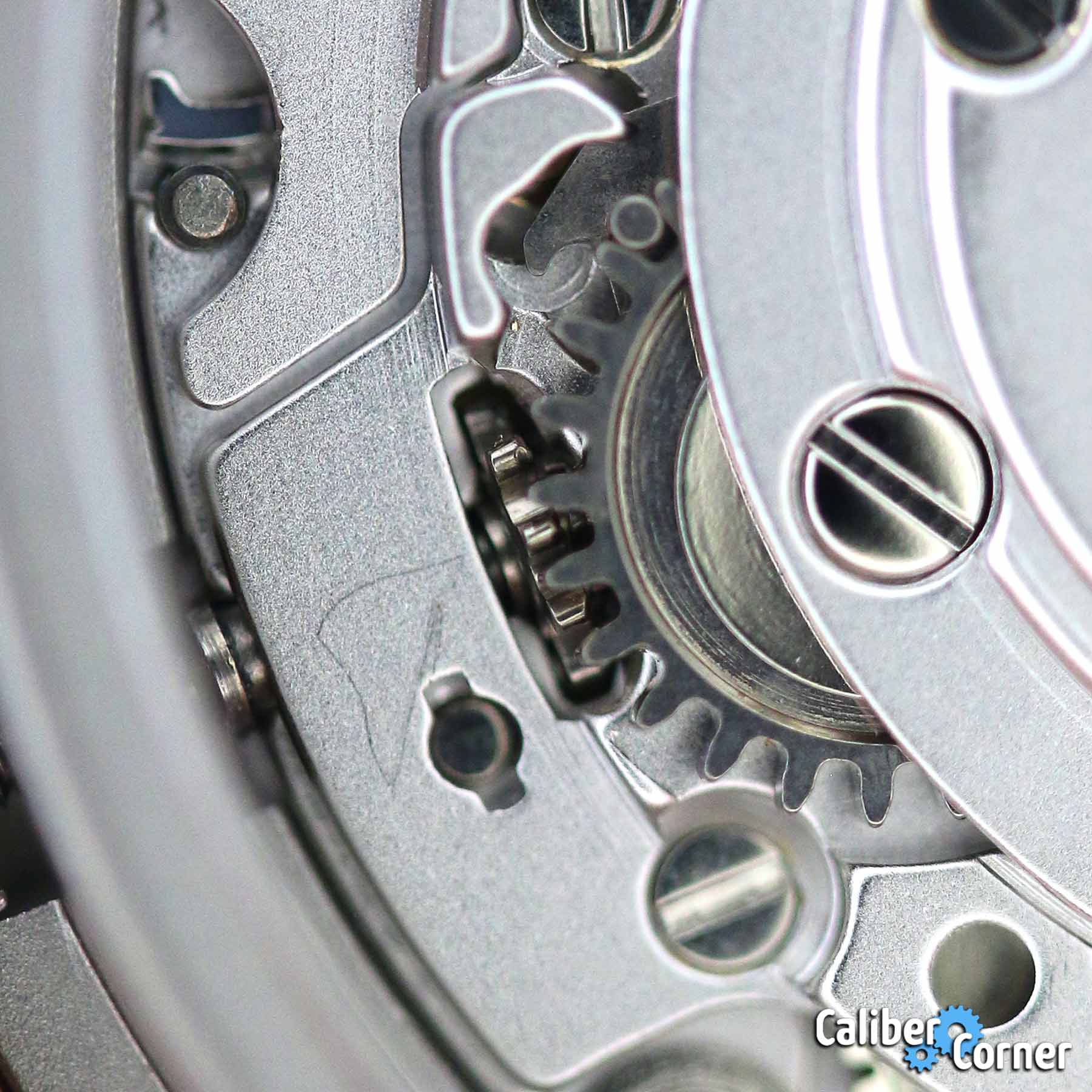

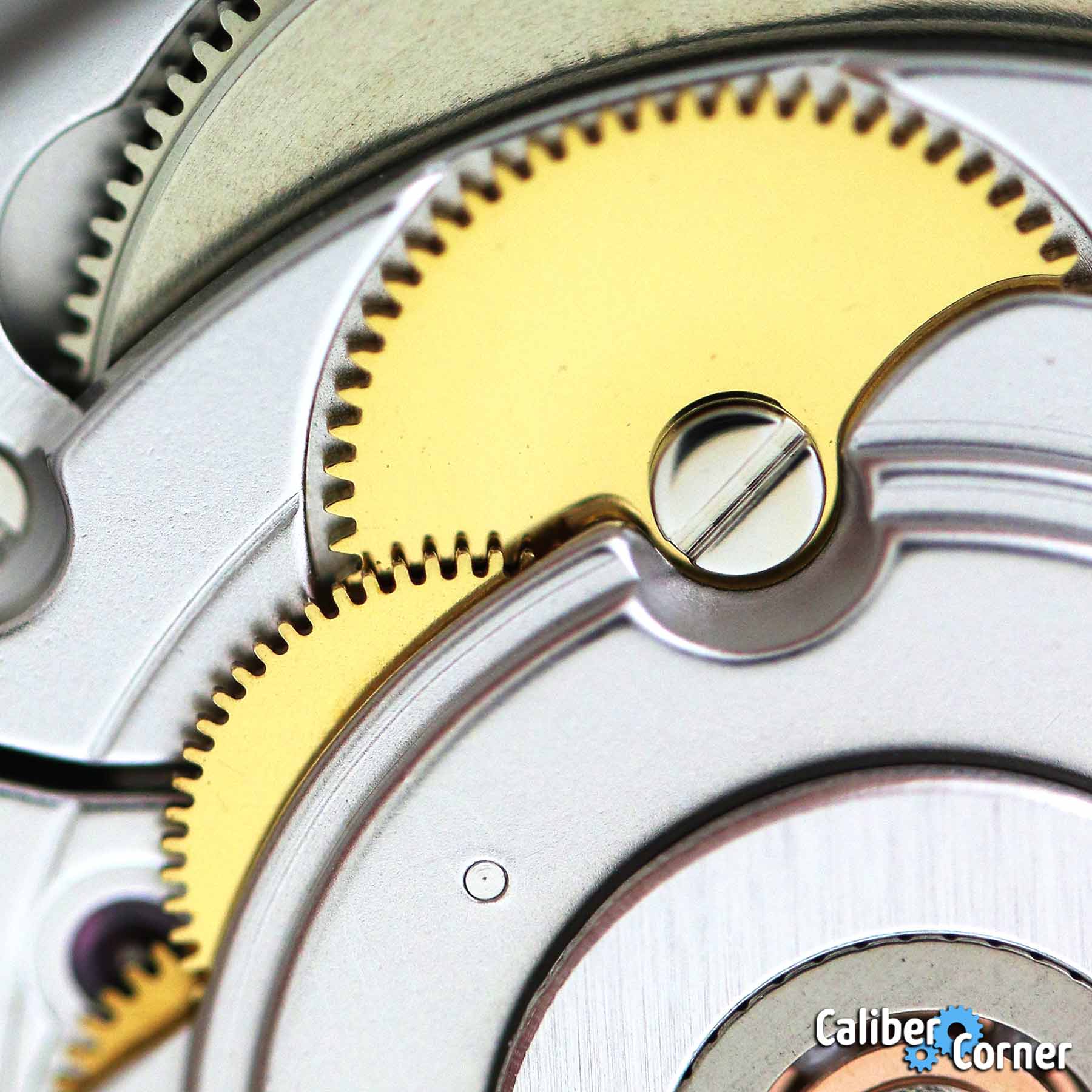

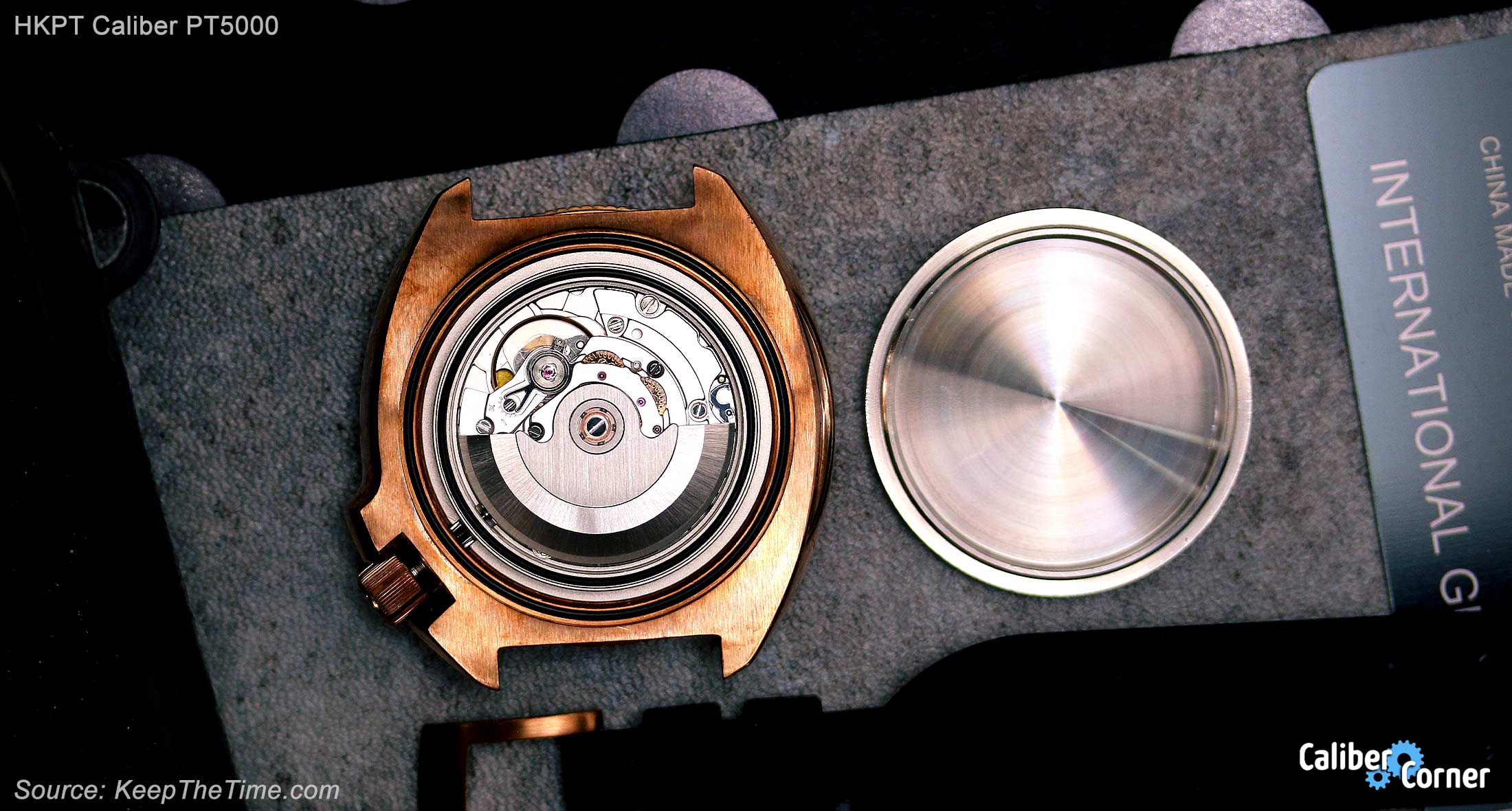





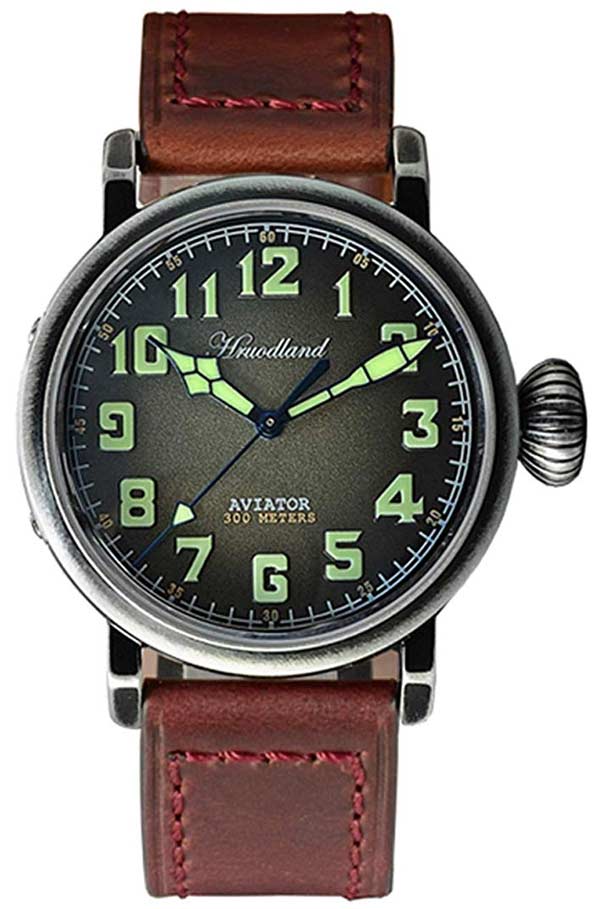


 network of watch sites
network of watch sites




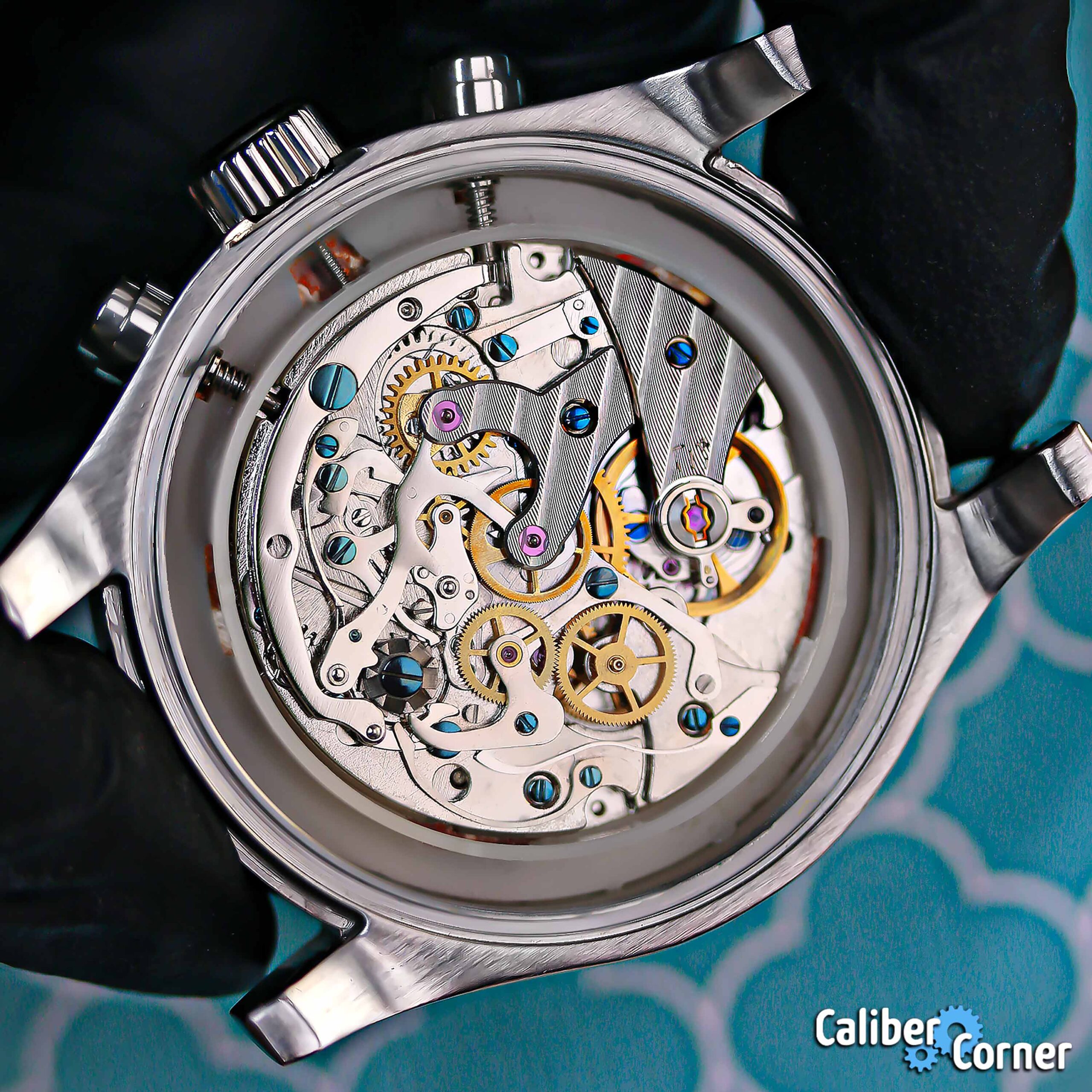
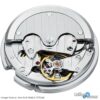


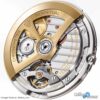




Recent Comments
Fear is not a good sign. I did buy a BM with caliber BM14-1975AC2 in…
I have a Baume & Mercier Clifton moa10059. Here on the caliber printed sw300. While…
Yes, it does. The only obvious downside of most models with this caliber in my…
It's lubricated! Why do people keep calling this a natural escapement?
link to the user manual is dead. Here's one that seems to work for now:…
Panzera also use this movement in their Aquamarine 45G
Hmm, my Hanhart does not have a ghost date, but it does not look as…